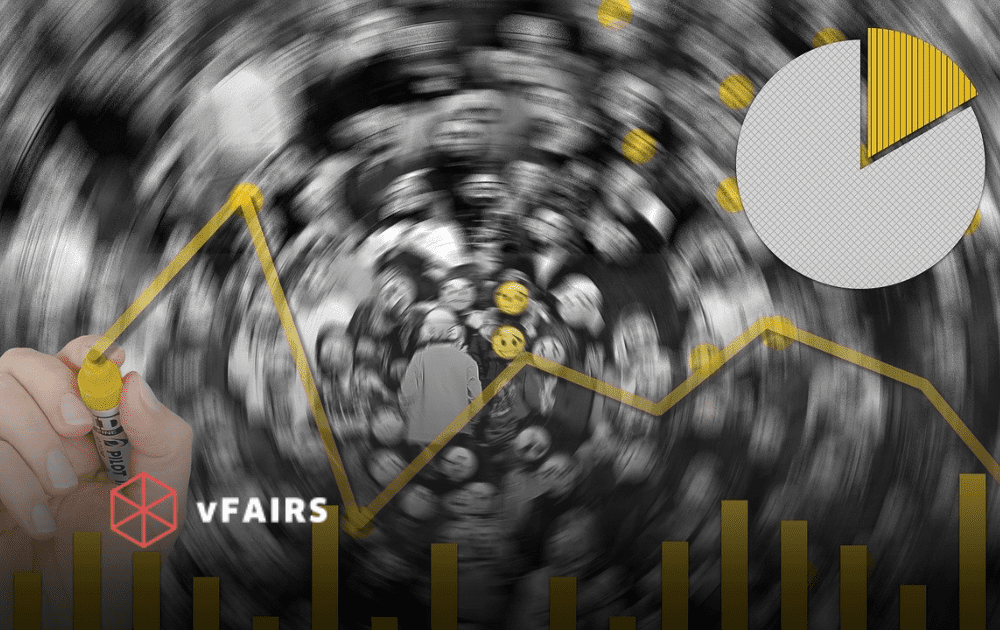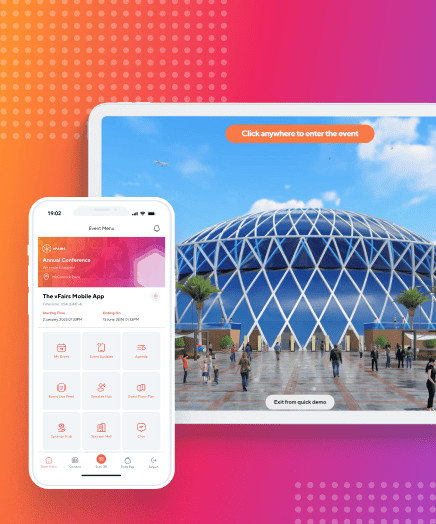When you convert your physical trade show into an online meeting, with help from a virtual event platform, one key benefit is the data you collect. Virtual trade shows generate swarms of analytics compared to the traditional format — both during and after the event.
These event reports are a golden opportunity for event organizers. Turning this data into action should be a top priority. It can not only help improve future events but provide a deeper understanding of your business and its customers.
In this article, we’ll cover some ways to approach this data and how it could benefit you long after the last attendee has logged out!
How to benefit from event analytics
While your trade show attendees enjoy themselves, your virtual event platform is working hard to analyze the goings-on. Metrics can include which online meeting was most popular, what types of content saw the most engagement, and the behavior of different attendee demographics.
Below are a few components of your overall strategy you could address with help from these detailed reports:
1. Exhibitor and speaker selection
Planning a trade show is all about the roster of exhibitors and speakers you put together. Depending on the industry or event topic, you may have a laundry list of possibilities. Considering this, it’s okay if not every booth or speaker is a huge hit. But that’s pretty helpful info to know — who performs well, and who doesn’t — and can be a real learning experience.
Based on the reports, your event management team can determine how popular each booth, exhibitor, talk, and webinar was among visitors. Using this data, you can refine your vendor selection at the next virtual trade show. Invite back those exhibitors and speakers that resonated, and perhaps replace those that didn’t. In other words, trim the fat, and deliver an even more rewarding event the next time around.
2. Content creation and sharing
Going even deeper, event analytics can reveal which collateral and types of content were most effective. This includes content offered at each booth, as well as the primary content offered by the trade show hosts.
Along with presenting the best exhibitors, you want to “wow” your attendees with content they will love across the board, with the information they can put to use. Moreover, you and your exhibitors don’t want to waste time and resources on content that isn’t engaged with, let alone that reflects poorly upon the provider. Read into the content’s performance using data from your virtual event platform, so you can share findings with exhibitors and streamline your own content strategy moving forward.
3. Knowing your audience
The measure of success for most virtual event organizers is attendance metrics. When thousands show up, you may have trouble keeping track or getting to know each attendee personally. That’s where attendee analytics come in handy. When hosting a major online meeting like a virtual trade show, the platform will gather notes on the types of visitors who show up (e.g. demographics, location, etc.). Beyond that, you can gain a better understanding of their behavior at your event — how many talks they attended, what they purchased, and much more.
Lead generation is an ideal outcome during and after the event, for trade show exhibitors and organizers alike. By studying your audience through these reports, you can refine audience targeting efforts during your events and in your overall brand marketing. The same goes for trade show vendors/exhibitors. Understanding the audience breakdown and their respective behaviors can also help in planning future events for optimal results, based on who is likely to attend — and who you hope joins the crowd next time!
4. Event layout and design
Navigating an online trade show is miles easier than an in-person one, literally and figuratively. That said, the small details in your event’s layout — booth design, exhibit hall arrangement, colors, and graphics — can mean big changes in the visitor outcomes.
By tracking engagement across your online meeting hall, from the lobby to the individual booths, your team can get a sense of the attendee experience in exploring the event. Which areas were most and least popular? Which booth designs worked and which didn’t? By observing the data, you can reinforce the design choices of certain components and identify areas for design improvement around the event. Similarly, these observations can be shared with exhibitors so they can prepare a more effective booth.
Summary
Data is everywhere these days. For good reason. While much of it is noise, the kernels of gold in your analytics reports are invaluable to your organization and customers. With regard to events like virtual trade shows, this data can provide direction from all angles. The event analytics made possible on a virtual event platform allow for endless action items that are simply not available with physical events.
Put simply, don’t sleep on the reports. Event data from your next virtual trade show may influence some of your best strategic moves, help you attract more customers, and drive business to your industry partners. All you have to do is connect the dots.
About vFairs
vFairs strives to deliver top-class virtual events for all audiences, with an intuitive platform that recreates physical events through an immersive online experience. With a range of powerful features and dedicated support for users around the world, vFairs removes the hassle from organizing, exhibiting at, and attending events such as conferences, trade shows, and career fairs. Contact the vFairs team to learn more or request a demo to see a virtual event in action.


